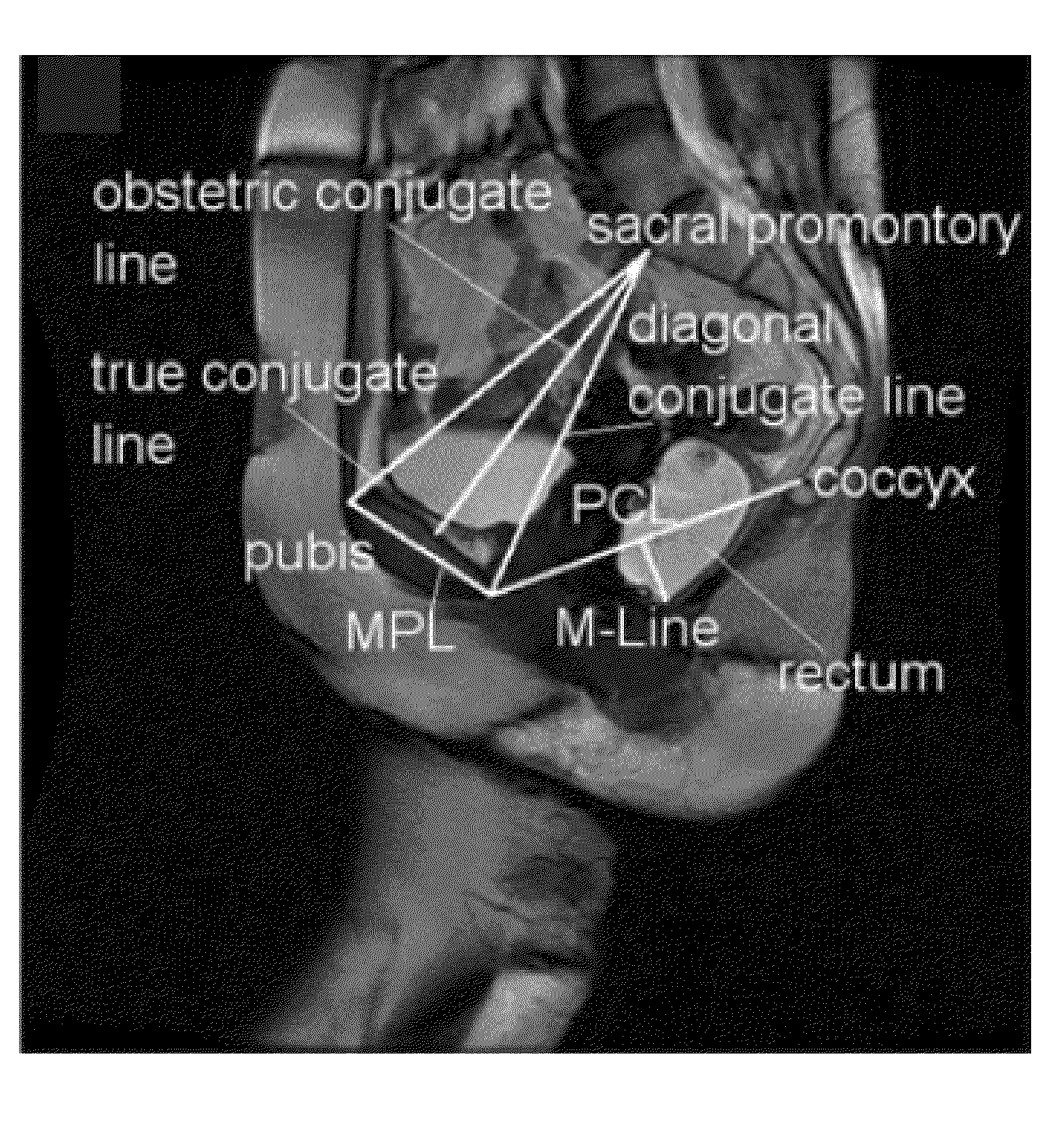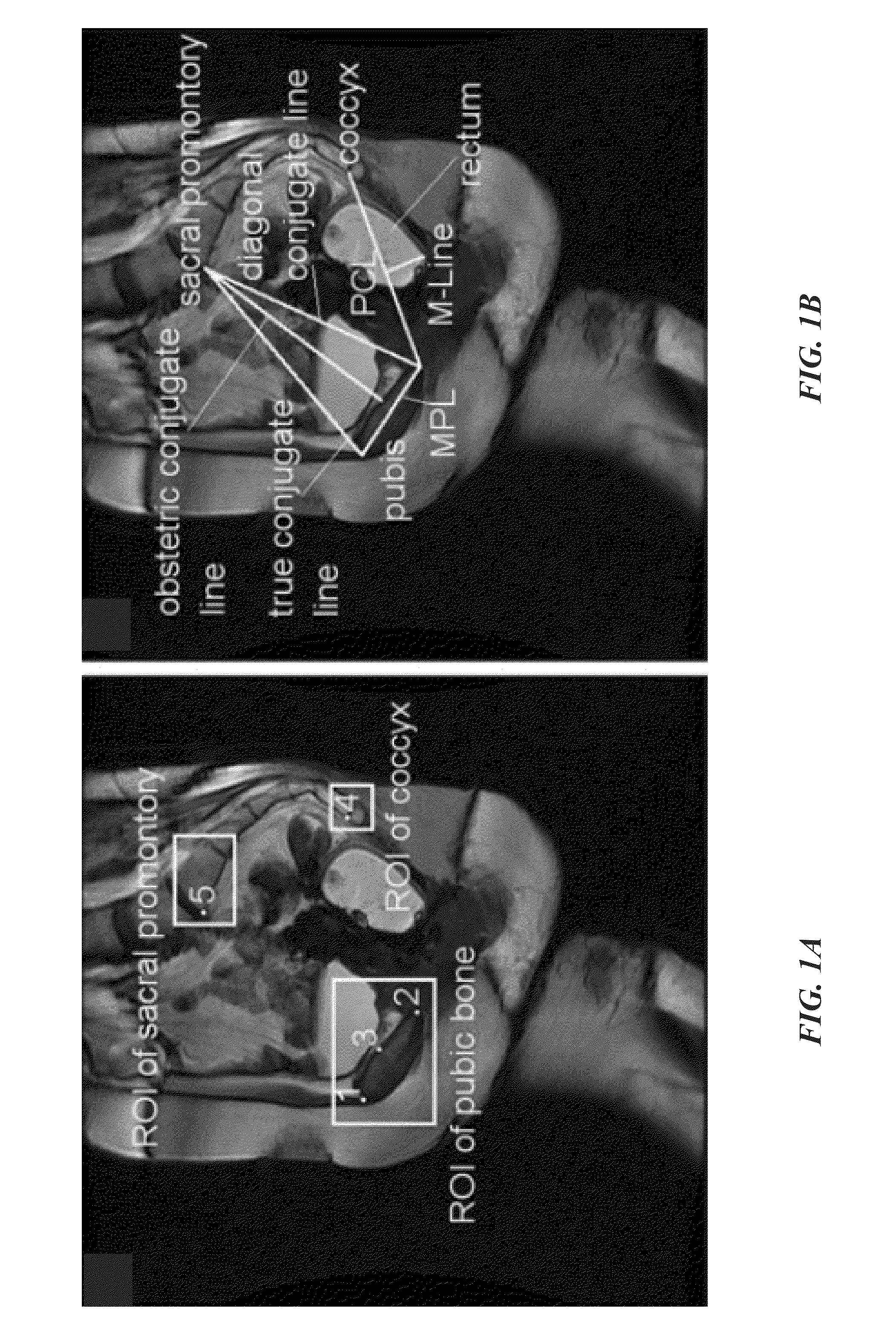Image-based automated measurement model to predict pelvic organ prolapse
an image-based, automatic technology, applied in the field of pelvic organ prolapse, can solve problems such as difficult identification of particular regions and structures, and achieve the effect of reducing noise and reducing nois
- Summary
- Abstract
- Description
- Claims
- Application Information
AI Technical Summary
Benefits of technology
Problems solved by technology
Method used
Image
Examples
example 1
[0124]The objective of this study is to design, test and validate a prediction model using SVMs and new MRI-based features to differentiate patients with and without POP.
[0125]The main objective of this study is to build a prediction model using SVMs that analyze clinical and new MRI-based features to improve the diagnosis of POP. The current MRI-based features were extracted using the current inventors' previously developed automated pelvic floor measurement model [48, 55]. The significant features, both clinical and MRI-based, were selected using correlation analysis with 95% significance level. The presented prediction model will allow the use of imaging technology to predict the development of POP in predisposed patients, and possibly lead to the development of preventive strategies. Additionally, it is expected that this quantitative prediction model will contribute to a more accurate diagnosis of POP.
[0126]I. Materials and Methods
[0127]This retrospective study used data from 2...
example 2
[0156]A fully automated localization system and methodology is presented herein for automatically locating the bounding boxes of multiple pelvic bone structures on MRI using SVM-based classification and non-linear regression model with global and local information. The model identifies the location of the pelvic bone structures by establishing the association between their relative locations and using local information such as texture features. Results show that the current methodology is able to locate the bone structures of interest accurately.
[0157]More specifically, the methodology described herein first identifies pelvic organs using k-means clustering and morphological opening operations. Then, it uses the spatial relationship between the organs and bone structures to estimate the locations of the structures. The pubic bone is located using the relative location between bones and organs, and texture information. Then, a non-linear regression model is used to predict the locati...
PUM
 Login to View More
Login to View More Abstract
Description
Claims
Application Information
 Login to View More
Login to View More - R&D
- Intellectual Property
- Life Sciences
- Materials
- Tech Scout
- Unparalleled Data Quality
- Higher Quality Content
- 60% Fewer Hallucinations
Browse by: Latest US Patents, China's latest patents, Technical Efficacy Thesaurus, Application Domain, Technology Topic, Popular Technical Reports.
© 2025 PatSnap. All rights reserved.Legal|Privacy policy|Modern Slavery Act Transparency Statement|Sitemap|About US| Contact US: help@patsnap.com



